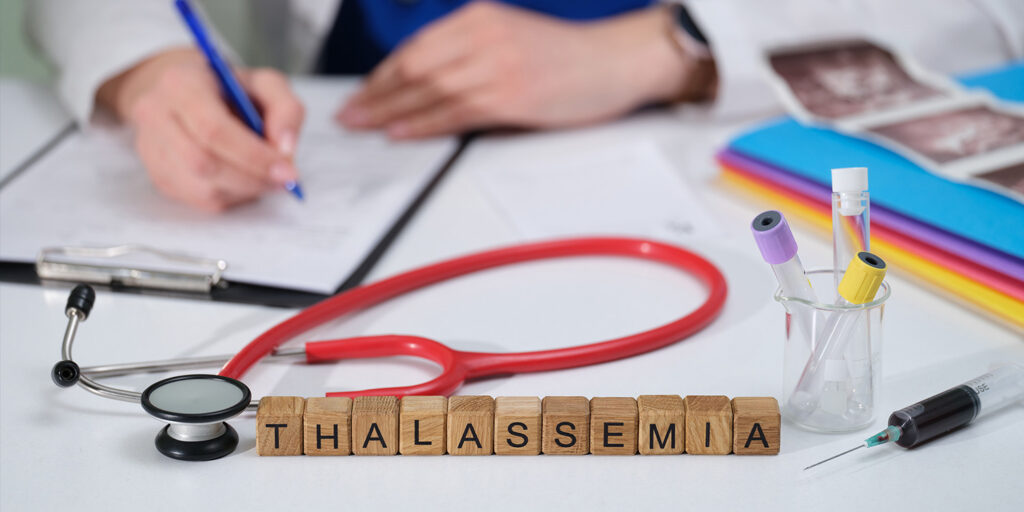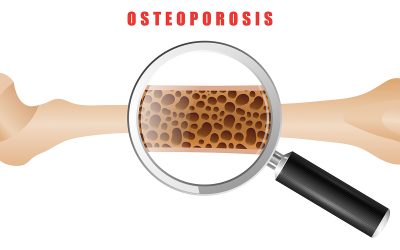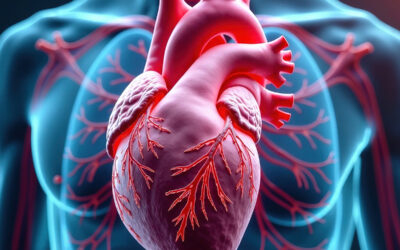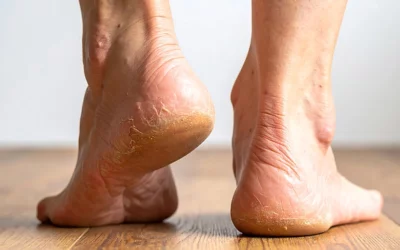Thalassaemia Explained: Types, Symptoms, Inheritance Patterns, and Management

Thalassaemia is one of the most common inherited blood disorders worldwide, affecting millions of people and placing a significant burden on public health systems. In India, where carrier prevalence is estimated at 3 to 4 percent of the population, the condition continues to be a major concern for both children and adults. The good news is, advances in medical care, early diagnosis, and ongoing awareness programmes have made it possible for patients with thalassaemia to live longer and healthier lives. That said, understanding the condition is the first step towards effective management and prevention. To help, in this article, we will explain thalassaemia in detail, including its types, inheritance patterns, symptoms, diagnosis, treatment, and lifestyle considerations.
Table of Contents
ToggleWhat is Thalassaemia?
Thalassaemia is a genetic blood disorder that affects the body’s ability to produce haemoglobin, the protein in red blood cells responsible for carrying oxygen. When haemoglobin production is faulty, it leads to anaemia, which can cause fatigue, weakness, and other health problems. Unlike temporary conditions, thalassaemia is inherited from one or both parents through altered genes. The severity of the condition depends on how many genes are affected, ranging from mild forms with few or no symptoms to severe forms that require regular medical care. Recognising thalassaemia as a genetic disorder helps in timely diagnosis, early treatment, and preventive steps through family screening.
Types of Thalassaemia
Thalassaemia is classified based on which part of the haemoglobin protein is affected. The two main types are:
1. Alpha thalassaemia
This type develops when the alpha-globin genes that make haemoglobin are missing or altered. The impact depends on how many of the four genes are affected:
- Missing one gene: No symptoms, often undetected.
- Missing two genes: Mild anaemia.
- Missing three genes: Moderate to severe anaemia, known as haemoglobin H disease.
- Missing four genes: Usually not compatible with life.
2. Beta thalassaemia
This form occurs when one or both beta-globin genes are defective, and the severity varies according to the number of genes involved:
- Beta thalassaemia minor: Usually mild or symptom-free, discovered during routine tests.
- Beta thalassaemia intermedia: Moderate anaemia requiring occasional treatment.
- Beta thalassaemia major (Cooley’s anaemia): Severe form requiring regular transfusions and lifelong care.
Sickle cell thalassaemia
This is a less common but clinically significant variant that occurs when a person inherits one gene for thalassaemia and another for sickle cell disease. In this condition, the red blood cells are not only fewer in number but also abnormally shaped, resembling a sickle. This combination leads to overlapping symptoms of both disorders, such as chronic anaemia, frequent pain episodes, delayed growth, and increased risk of infections. The severity can vary from moderate to severe, depending on the specific genetic inheritance, and careful monitoring is essential for long-term management.
Read more-Blood Disorders: Types, Symptoms, Causes and Treatments
Causes of Thalassaemia
Thalassaemia occurs because of changes in the genes responsible for haemoglobin production. These changes affect the formation of healthy red blood cells and lead to anaemia. The main causes include:
- Genetic mutations: Alterations in the DNA that control haemoglobin production reduce the efficiency of red blood cells.
- Inheritance from parents: The condition is passed down through families. Carrying one defective gene may cause mild symptoms, while inheriting two genes can result in severe thalassaemia.
- Family history: Having close relatives with thalassaemia increases the risk of being a carrier or developing the condition.
Because the disorder is inherited, genetic testing and counselling are important preventive steps for at-risk families.
Symptoms of Thalassaemia
The symptoms of thalassaemia depend on the severity of the condition. While many carriers or those with thalassaemia minor remain asymptomatic, others may develop mild to severe complications early in life.
Mild to Moderate Symptoms
- Persistent fatigue and weakness
- Dizziness or light-headedness
- Pale or yellowish skin (jaundice)
- Slow growth or delayed puberty in children
Severe Anaemia Signs
- Enlarged spleen or liver
- Bone deformities, especially in the face and skull
- Dark urine due to breakdown of red blood cells
- Shortness of breath and rapid heartbeat
Recognising these signs at an early stage is important, as timely diagnosis and treatment can greatly improve quality of life.
How is Thalassaemia Diagnosed?
Detecting thalassaemia involves a series of blood and genetic tests that help identify the severity of the disorder and whether a person is a carrier. Common diagnostic methods include:
- Complete Blood Count (CBC): Checks haemoglobin levels and red blood cell size to detect anaemia.
- Haemoglobin electrophoresis: Analyses different types of haemoglobin in the blood to confirm thalassaemia.
- Genetic testing: Identifies mutations in haemoglobin-related genes and helps in detecting carriers.
- Newborn screening: Early testing of infants to identify severe forms before symptoms appear.
Accurate diagnosis not only guides treatment but also plays an important role in family planning and genetic counselling.
Treatment Options for Thalassaemia
Managing thalassaemia requires ongoing medical care, as the condition directly affects haemoglobin levels and the ability of red blood cells to carry oxygen. The main treatment approaches include:
- Regular blood transfusions: The most common method to manage severe anaemia. Transfusions restore healthy red blood cells, but long-term use may lead to iron overload.
- Iron chelation therapy: Medications are prescribed to remove excess iron caused by frequent transfusions, protecting the heart, liver, and other organs.
- Bone marrow or stem cell transplant: The only potential curative option for severe thalassaemia, especially effective in younger patients with a matched donor.
- Supportive treatments: Hormone therapy, medications, or spleen removal (splenectomy) may be required for some patients to manage complications.
Advances in medical research, including gene therapy, are being explored as future treatment options for this blood disorder.
Lifestyle Changes for Managing Thalassaemia
Alongside medical treatment, simple lifestyle adjustments play an important role in thalassaemia management. The following steps can help reduce complications and improve overall health:
- Balanced nutrition: Focus on fresh fruits, vegetables, whole grains, and foods rich in dietary fibre. Patients should avoid iron-rich foods such as red meat and iron-fortified cereals to prevent excess iron accumulation.
- Limiting alcohol: Alcohol can further damage the liver, which is already vulnerable in people with this blood disorder.
- Regular vaccinations: Protecting against infections such as hepatitis and pneumonia is important, as frequent blood transfusions and weakened immunity increase the risk of illness.
- Safe physical activity: Moderate exercise helps maintain bone strength and cardiovascular health, but high-intensity activities should be avoided if anaemia is severe.
- Routine medical follow-up: Regular monitoring of haemoglobin, iron levels, and organ function ensures timely adjustments to treatment.
These lifestyle measures, combined with timely medical care, support long-term thalassaemia treatment and improve quality of life.
Complications of Thalassaemia
If not managed properly, thalassaemia can lead to several health complications due to defective haemoglobin and frequent blood transfusions. Some common complications include:
- Iron overload: Repeated transfusions cause excess iron to build up in the body, damaging vital organs such as the heart, liver, and endocrine glands.
- Bone deformities: Overactive bone marrow, trying to compensate for the lack of healthy red blood cells, can cause bone thinning and facial changes.
- Enlarged spleen (splenomegaly): The spleen works harder to filter defective cells, often becoming enlarged and sometimes requiring surgical removal.
- Delayed growth and puberty: Children with thalassaemia often experience stunted growth and hormonal imbalances.
- Increased risk of infections: Blood transfusion for thalassaemia and a weakened immune system make patients more prone to bacterial and viral infections.
Can Thalassaemia Be Cured?
At present, there is no universal cure for thalassaemia. Most patients manage the condition through regular blood transfusions and iron chelation therapy, which help maintain healthy haemoglobin levels and prevent complications.
For some patients, a bone marrow or stem cell transplant offers the possibility of a permanent cure. This treatment works by replacing the defective bone marrow with healthy donor cells, allowing the body to produce normal red blood cells. However, it is only suitable for selected cases, especially when a matched donor is available and the patient is in good health.
Ongoing research, including gene therapy, is showing promise as a future option for treating thalassaemia at its root cause.
Can Thalassaemia Be Prevented?
Since thalassaemia is an inherited genetic disorder, it cannot be prevented once a child is born with the condition. However, steps can be taken to reduce the risk of passing it on to future generations:
- Thalassaemia carrier test: A simple blood test that helps identify carriers before marriage or pregnancy.
- Genetic counselling: Couples with a family history of thalassaemia can receive guidance on the likelihood of having an affected child.
- Prenatal testing: Screening during pregnancy can detect if the baby is affected, allowing parents to make informed decisions.
- Awareness programmes: Educating families and communities about thalassaemia helps encourage early screening and responsible family planning.
These preventive measures are essential in a country like India, where thalassaemia prevalence remains high.
Why Choose Graphic Era for Thalassaemia Treatment in Dehradun
At Graphic Era Hospital, we understand the challenges that thalassaemia brings to both patients and their families. Our focus is not only on providing treatment but also on building long-term support and care. We provide:
- Experienced Specialists: Our team of haematologists and paediatric experts are dedicated to diagnosing and managing thalassaemia with precision and compassion.
- Advanced Technology and Minimally Invasive Procedures: We use modern diagnostic tools for haemoglobin testing and genetic screening, provide safe blood transfusion services, and offer bone marrow transplant facilities when needed.
- Comprehensive Rehabilitation and Personalised Care: From regular monitoring to counselling and tailored treatment plans, we ensure that every patient receives care designed for their unique needs.
We are committed to combining expertise, technology, and compassion so that thalassaemia patients in Dehradun receive the best possible care close to home.
Conclusion
Thalassaemia is a lifelong genetic disorder, but with timely diagnosis, proper treatment, and lifestyle adjustments, patients can lead healthier and more fulfilling lives. Advances in blood transfusion safety, iron chelation therapy, and bone marrow transplantation have greatly improved outcomes, while preventive measures such as carrier testing and genetic counselling remain crucial in reducing new cases.
If you are looking for specialised care for thalassaemia in Dehradun, Graphic Era Hospital is here to support you. We are committed to providing comprehensive care, combining medical expertise with compassionate support for families. To book a consultation with a haematologist at Graphic Era Hospital, call 1800-889-7351 and take the first step towards effective thalassaemia management.
Frequently Asked Questions (FAQs)
How does thalassaemia affect the body?
Thalassaemia reduces the production of healthy haemoglobin, leading to fewer functional red blood cells. This causes anaemia, fatigue, delayed growth, and in severe cases, complications affecting the heart, liver, and bones.
Who is at risk for thalassaemia?
Children born to parents who are both carriers of the thalassaemia gene have a higher risk. Communities in India with high carrier rates also report more cases.
What are the early signs of thalassaemia in children?
Paleness, poor appetite, delayed growth, frequent infections, and an enlarged abdomen are often seen in children with moderate to severe forms of thalassaemia.
What is the difference between alpha and beta thalassaemia?
Alpha thalassaemia occurs when alpha-globin genes are affected, while beta thalassaemia develops from defects in beta-globin genes. Both types vary in severity depending on how many genes are altered.
How often do thalassaemia patients need blood transfusions?
Patients with thalassaemia major may need transfusions every 2–4 weeks, while those with milder forms may require them occasionally or not at all.
What are the risks of frequent blood transfusions?
Repeated transfusions can cause iron overload, which may damage the heart, liver, and other organs. Iron chelation therapy helps prevent these complications.
Can a bone marrow transplant cure thalassaemia?
Yes, bone marrow or stem cell transplant is currently the only treatment that offers a potential cure, but it is suitable only for selected patients with a matched donor.
How does genetic counselling help in preventing thalassaemia?
Genetic counselling guides families on carrier status, inheritance patterns, and reproductive options, reducing the risk of passing the condition to the next generation.
Which doctor should I consult for thalassaemia near me?
A haematologist or a specialist in blood disorders is the right doctor to consult for thalassaemia. At Graphic Era Hospital in Dehradun, experienced haematologists provide comprehensive treatment.
Where can I find thalassaemia treatment in Dehradun?
Graphic Era Hospital offers advanced thalassaemia treatment in Dehradun, including diagnosis, regular transfusion support, iron chelation therapy, and bone marrow transplant facilities.
Can thalassaemia patients live a normal life with treatment?
Yes, with regular medical care, safe transfusions, and lifestyle management, many thalassaemia patients lead active and fulfilling lives.
What is the life expectancy of someone with thalassaemia?
Life expectancy depends on the severity of the disease and access to treatment. With proper care, patients with thalassaemia major can now live well into adulthood and beyond.
Which doctor should I consult for thalassaemia near me?
A haematologist, who specialises in blood disorders, is the right doctor to consult for thalassaemia. If you are in Dehradun, experienced haematologists at Graphic Era Hospital provide comprehensive diagnosis and treatment for thalassaemia.
By Specialities
- Bariatric Surgery
- Cancer Care
- Cardiology
- Dental
- Dermatology
- Diabetes & Endocrinology
- Endocrinology and Diabetes
- ENT (Ear Nose Throat)
- Eye Care
- Gastroenterology
- Haematology
- Health Care
- Health Tips
- Hematology
- Hepatology
- Internal Medicine
- Mental Health and Behavioural Sciences
- Metabolic
- Neonatology
- Nephrology
- Neurology
- Nutrition & Dietetics
- Obstetrics & Gynaecology
- Oncology
- Ophthalmology
- Orthopaedics
- Paediatric
- Physiotherapy & Rehabilitation
- Plastic and Reconstructive Surgery
- Psychology
- Pulmonology
- Rheumatology
- Spine
- Urology
Recent Posts
- Struggling with an Enlarged Prostate? Discover How Your Diet Can Help
- Knee Pain in Young Adults: Causes, Symptoms, and Treatment Options
- Most Common Lifestyle Diseases in India and How to Prevent Them
- Does Pain in the Lower Back Always Mean a Kidney Problem?
- Osteoporosis: Early Warning Signs, Causes, and Treatment
Need expert medical advice?
Share your details and our healthcare specialists will reach out to assist you.
By proceeding, you acknowledge and agree to our Privacy Policy, Terms of Use, and Disclaimer.


















